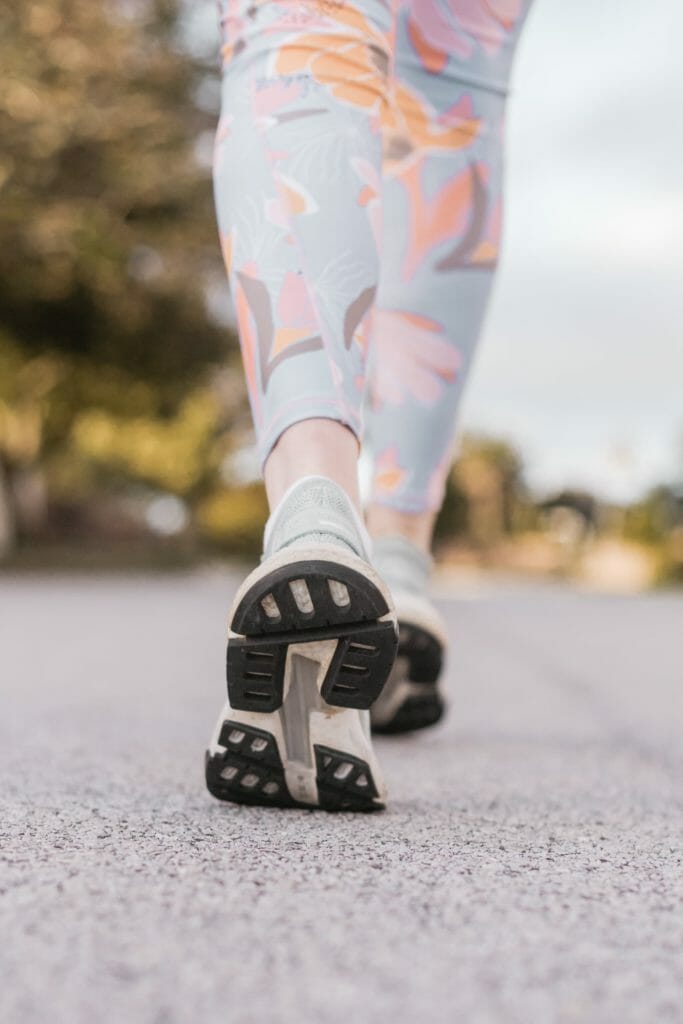Have you ever stopped to think about how much movement you generate throughout the day? Many of us are leading active lifestyles – running from one place to the next while making sure we’re moving our bodies regularly. Since the pandemic began, fitness communities around the world have put an emphasis on prioritizing exercise in our routines to ensure that we are staying healthy. This is especially true during a time when access to gyms and studios were compromised through pandemic-related closures. There are a number of useful resources out there to help keep us on track in reducing weight and burning calories.
It’s no secret that walking is one of the best and simplest forms of working out – not to mention, counting steps is one of the most common measures of fitness tracking for people of all ages and activity levels. While most smartphones and wearables, like smartwatches, come with a step-counting feature, many people choose to wear a pedometer for a more accurate way to count steps during workouts.
What is a pedometer?

Depending on who’s reading this, the term ‘pedometer’ might make more sense to you. Back before step-counting technologies were a standard feature in smartphones and smartwatches, people mostly relied on pedometers – A.K.A. step counters – as a primary fitness tracker during their workout.
Traditional pedometers resemble a standard digital watch that simply counts the number of steps taken during a certain period of time. Some pedometers are more complex – outfitted with features that can provide more information – while others simply count the number of steps during a workout.
Some features that modern pedometers are equipped with include heart rate measurements, number of calories burned, and number of hours spent standing. All of these measurements help to paint the picture of one’s overall activity. Whether you’re looking to reduce weight or increase muscle strength, finding the right pedometer for you is an excellent way to stay on top of your health.
Technology behind a pedometer
So how do pedometers actually work? The technology behind pedometers is quite simple, depending on the device. Of course, more sophisticated pedometers will come with complex technologies that make it a bit more challenging to illustrate. Pedometers rely on vibration through movement to generate the number of steps taken during a workout. Traditional pedometers rely on a magnetic pendulum that sways back and forth, recording the wearer’s movement. While many pedometers are worn on the wrist, another option to accurately count steps is to wear it around your belt-area. Pedometers are typically within 10% accuracy in counting the number of steps taken, and within 30% of the number of calories burned. While the margin of error seems wide, they are still an excellent way to stay on top of your overall activity.

How does a Pedometer help people reach their fitness goals?
The benefits of wearing a pedometer or fitness tracker are in abundance. Pedometers are a great way for people of all ages and activity levels to stay on top of their health and wellness. Wearing one is even more beneficial for those who are carefully tracking their workouts with the goal of reducing their weight or increasing muscle strength. Having an idea about the amount of movement generated throughout the day illustrates so much more than whether or not we’ve gotten a good workout, it also makes us aware of changes we can make in our daily lives to increase or sustain the amount of activity needed.
Tracking to match specific fitness goals
Most of us have been there: starting out on a new fitness plan with tons of motivation to meet our goals. One of the most sustainable ways to make sure we’re actually reaching those goals is through tracking our movement. While pedometers help us to count steps and track other information – they also paint an important picture about our progress over time. For example – a smartwatch that captures information about cardiac activity will show a reduction in resting heart rate as a result of consistent activity. This is a huge indicator of a successful fitness routine!
Changing our routines for better health
Did you know that those who take 12,000 steps per day have a 65% lower risk of serious health issues in comparison to those who only take 4,000 steps? This is a significant indicator of the extreme benefits that step counting has on the longevity of our lives. We get it – working in an office certainly limits someone’s ability to get the number of steps needed in our day – but small changes make a difference! Take the stairs instead of the elevator, increase the number of trips to the fountain while drinking enough water, and take time to get up and stretch. Small changes like these will help you see a difference in your overall health – it’s all about evolution, not revolution!
FAQ
1. How to use a pedometer?
Using a pedometer depends on the device you choose to go with. Typically – a pedometer is worn either around your wrist or at your waist. You will have the option to adjust settings and tailor it to your preferences. This is dependent on how simple or sophisticated your pedometer is.
2. Which one should I buy?
There are a number of great resources that offer in-depth reviews and recommendations on finding the right pedometer. It’s all relative to what you’re looking for in a fitness tracker. If you’re looking for something simple, the iGANK Simple Walking Pedometer is a great option. If you’re looking for something with a few more bells and whistles, we recommend checking out the Fitbit Charge 5.
3. How accurate are pedometer apps?
Pedometers certainly vary in accuracy depending on the device and the software used. It’s also important to keep in mind that a pedometer is most accurate when used appropriately. A study conducted by researchers from Switzerland’s Institute of Sport Sciences concluded that pedometers – especially those on smartphones – are most effective when strapped close to the body. There is always a slight margin of error with pedometers, however they are typically very accurate in measuring activity.
Whether you’re looking to keep an eye on your activity or embarking on a hardcore fitness routine – finding the right pedometer is an excellent way to track your movement and make changes accordingly. Pedometers help people reach their fitness goals by providing information about their workout. This could be anything from counting the number of steps in a workout to the number of calories burned. Pedometers are a great tool to complete any fitness routine, no matter what your goals are!



